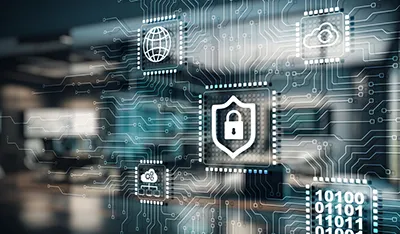Leading Tips for Ensuring Secure Data Destruction in Your Cyber Security Plan
Leading Tips for Ensuring Secure Data Destruction in Your Cyber Security Plan
Blog Article
The Value of Effective Information Damage Practices in Shielding Sensitive Details and Ensuring Computer Safety And Security
In a period where data violations are progressively common, the relevance of reliable information destruction techniques can not be overemphasized. Organizations face significant threats when sensitive info is inadequately disposed of, potentially causing unapproved gain access to and serious financial consequences. Applying durable data damage techniques not only alleviates these risks yet also aligns with legal conformity requirements, guaranteeing that companies copyright their online reputation and foster customer trust. The concern remains: what details approaches can be used to improve these practices, and just how can companies efficiently integrate them into their general cybersecurity framework?
Understanding Data Devastation
Understanding data destruction is vital in today's electronic landscape, where sensitive details can quickly be jeopardized. Reliable data damage includes not merely erasing documents yet ensuring that data is irretrievable via thorough methods. This process is important for companies that handle private customer information, copyright, or interior documents, as any kind of breach can result in extreme economic and reputational consequences.
Data devastation incorporates various strategies, consisting of shredding physical media, degaussing magnetic storage gadgets, and utilizing software-based remedies that overwrite information multiple times. Each method serves a particular purpose and needs to straighten with the level of sensitivity of the info being taken care of. For instance, physical destruction is typically liked for tough drives having very personal information, while software methods might suffice for less sensitive information.
In addition, sticking to sector criteria and laws, such as the General Information Defense Law (GDPR) or the Medical Insurance Transportability and Liability Act (HIPAA), is vital for compliance and to reduce legal risks. Organizations needs to establish a robust information damage policy, train employees on ideal methods, and frequently investigate their procedures to ensure that all delicate info is gotten rid of securely and effectively.
Threats of Inadequate Practices
Insufficient data destruction methods subject organizations to considerable dangers that can have far-ranging repercussions. When sensitive details is not appropriately gotten rid of, it remains at risk to unauthorized accessibility, which can result in information breaches and identity burglary. Such cases not only endanger the safety and security of people however additionally taint the company's reputation, leading to a loss of customer trust fund and potential monetary repercussions.
Additionally, regulatory conformity is progressively strict in several industries. Failing to abide by information destruction guidelines can result in significant penalties and lawsuits versus organizations. These charges can stress financial resources and draw away attention from core service procedures.
In addition, the misuse of residual information can result in intellectual property burglary or corporate reconnaissance, jeopardizing affordable benefits (data destruction). The influence of inadequate data destruction prolongs past instant monetary losses; it can additionally cause lasting damages to brand name honesty and market position

Organizations have to recognize that data safety and security is not exclusively concerning protecting against violations; it additionally incorporates the accountable management of information throughout its lifecycle. Neglecting effective data destruction protocols can have catastrophic implications, highlighting the necessity for robust measures to minimize these threats.
Ideal Practices for Information Damage
Executing reliable information damage methods is vital for securing sensitive information and maintaining conformity with regulative requirements. Organizations must embrace a multi-faceted method to guarantee that data is irretrievable, therefore protecting against unapproved browse around this web-site gain access to and prospective breaches.
First, data should be classified based on sensitivity, permitting companies to apply appropriate destruction approaches customized to the level of threat. For digital data, utilizing software-based data-wiping tools that adhere to sector standards can effectively overwrite existing information. Physical damage techniques, such as shredding or degaussing, are essential for devices that store delicate details, making certain total obliteration.
Establishing a clear information retention policy is vital, describing the length of time different kinds of information should be preserved prior to damage. link Normal audits of data storage space systems are likewise required to recognize out-of-date or unnecessary data requiring removal.
Moreover, training employees on the relevance of information destruction and the certain protocols to adhere to fosters a society of safety and security within the company. Lastly, maintaining documentation of information damage refines offers responsibility and sustains compliance with exterior regulations and interior plans. By sticking to these ideal techniques, companies can dramatically minimize the risks connected with information direct exposure.
Legal and Conformity Factors To Consider

Failing to follow these laws can result in serious fines, consisting of substantial penalties and reputational damage. Organizations has to apply a robust data devastation plan that aligns with these lawful frameworks and provides clear guidelines on the correct techniques of data disposal, whether physical shredding or digital wiping.
Furthermore, maintaining documentation of information destruction tasks is important for showing compliance during audits or examinations. By prioritizing lawful and conformity considerations, organizations can boost their information security position and foster depend on with stakeholders and clients, eventually adding to a more protected information monitoring setting.
Advantages of Effective Information Devastation
Efficient data damage methods prolong beyond simple compliance; they provide considerable advantages to companies that prioritize them. By guaranteeing that sensitive information is irretrievably ruined, organizations mitigate the risk of information breaches link and the possible financial effects related to them. This positive approach not just safeguards against unauthorized gain access to yet also boosts the total reliability of the organization in the eyes of customers and stakeholders.
Carrying out robust information destruction approaches, such as physical devastation of storage gadgets or innovative data cleaning methods, adds to the strengthening of an organization's cybersecurity stance. data destruction. It decreases the possibility of copyright burglary and protects exclusive information, thus maintaining an affordable edge in the marketplace

Conclusion
Finally, effective information damage techniques are essential for securing delicate details and improving overall computer system security. By applying thorough methods such as software, shredding, and degaussing overwriting, organizations can alleviate the risks linked with unapproved gain access to and data breaches. Adherence to regulative standards, including GDPR and HIPAA, more enhances conformity and secures versus legal repercussions. Inevitably, a dedication to robust data destruction strategies cultivates a culture of responsibility, therefore strengthening an organization's cybersecurity pose and maintaining customer trust.

Report this page